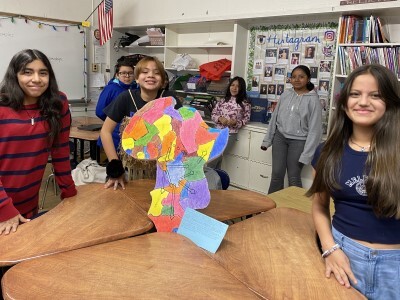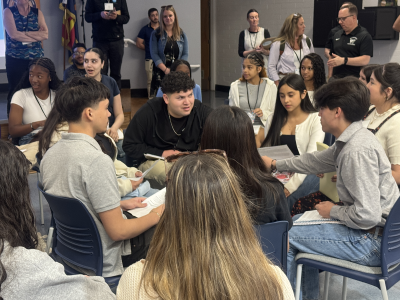The Role of Technology in Next Gen Professional Learning
Topics

Educators are the lead learners in schools. If they are to enable powerful, authentic, deep learning among their students, they need to live that kind of learning and professional culture themselves. When everyone is part of that experiential through-line, that’s when next generation learning thrives.
A look at what role technology plays in supporting, enabling, or transforming professional learning for teachers.
As NGLC and its Next Gen Professional Learning Project partners explore all aspects of the professional learning that best enables teachers to work successfully in personalized, next gen learning schools, we are focusing on four related design challenges—innovative practices, scaling strategies, role of technology, role of providers. When it comes to technology tools and platforms, the design challenge is to uncover what role technology plays in supporting, enabling, or transforming professional learning.
We asked over 200 leading educators to guide us in this work by completing a survey about these design challenges. We’ve been busy analyzing the results, including the responses about the technology tools, resources, software, and platforms educators use to support next gen professional learning. Our analysis is in early-stages (a more formal report later this year will provide the official results and analysis), but we want to share some early observations about the technology design challenge: What are the most productive roles for technology tools and platforms in next gen professional learning?
Top Technology Tools, Resources, Software, and Platforms
We asked educators to share the top three-to-five tools, resources, software, or platforms their organization currently uses to implement next gen professional learning. These are the three most commonly used tools/platforms:
- Google product (Classroom, Drive, Docs, Hangout, etc.)
- Schoology
- Canvas
Google products were identified five times more often than either Schoology or Canvas. It’s also interesting to note, however, that of the 281 inputs to this question, 130 were single mentions of individual tools. To us that indicates experimentation with a variety of tools for a variety of purposes when it comes to next gen professional learning. It’s also evident that most participants are using general technology tools for professional learning. In general, most participants identified tools that allow educators to...
- Interact with each other
- Manage the process of professional learning
- Learn with content asynchronously
How are educators using Google, Schoology, and Canvas?
We asked educators to explain what they use each tool, platform, or software for when it comes to next gen professional learning.
Of those who are using Google tools, the functions that they engage in can be clustered into the following themes:
- Collaboration
- Communication
- Virtual file cabinet to support resource sharing (curricula, schedules, etc.), artifact submission (samples of teacher practice)
- Reflection and practice as a member of a learning community (teachers submit problems of practice)
- Tracking progress (student and/or teacher learning data)
- Microcredentialing
- Creating a blended learning environment (playlists, asynchronous access of content/templates)
Of those using Schoology, these are the functions it supports:
- Blended learning approaches to professional development (modules, self-paced learning)
- Microcredentialing
- Resource sharing
- Communication
Of those using Canvas, the platform supports these functions:
- Resource sharing
- Asynchronous professional learning
- Communication through discussion groups
What’s the Function of Technology in Next Gen Professional Learning?
We asked participants to share how they currently use or plan to use tools, resources, software, platforms to support next gen professional learning in their organization against a set of fixed choices. And here’s what they said:
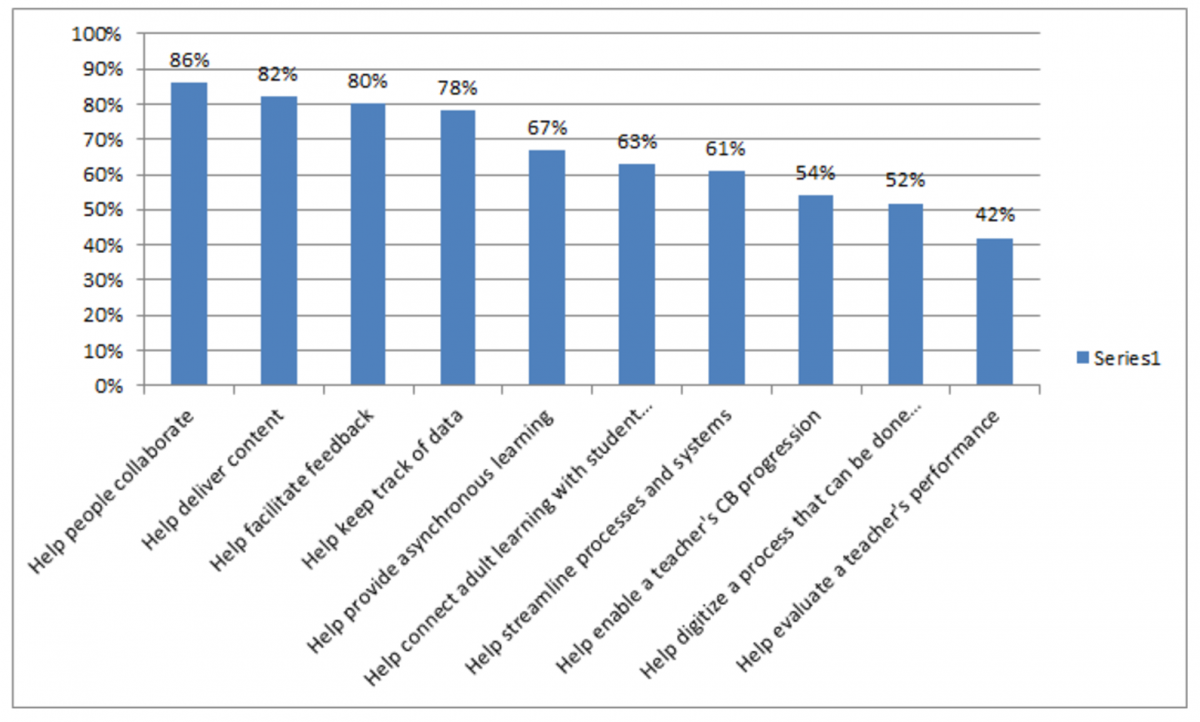
Availability of Technology
We asked participants to rate, using a continuum, how well they are able to find tools, resources, software, and platforms against functions (the survey called these categories) that support next gen professional learning.
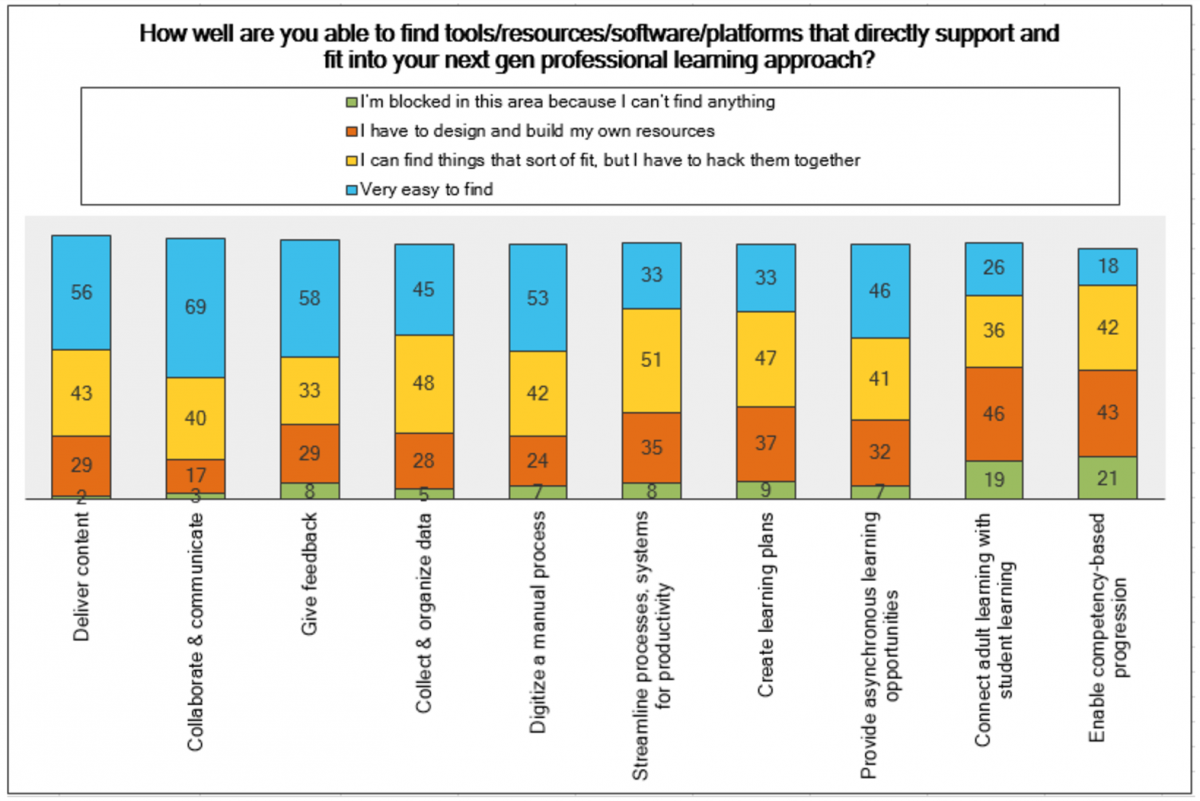
When I look at this graph, what I find most notable is that one of the hardest tools or platforms for participants to find is one that enables teacher’s competency-based progressions. On the flip side, more than half of respondents reported it was very easy to find tools for these three functions:
- Content delivery tools and platforms
- Collaboration and communication tools and platforms
- Tools and platforms to give feedback
And yet many functions require hacking things together. This is especially true for tools and platforms that support teachers with these functions:
- Collect and organize data
- Streamline processes and systems for productivity
- Create learning plans
- Enable their own competency-based progression
Furthermore, some functions require educators to build their own tools or cause them to feel completely blocked from moving forward, especially for these functions:
- Connect adult learning with student learning processes and outcomes
- Enable a teacher’s competency-based learning progression
Do Educators Have the Professional Learning Technology They Need?
Not surprisingly, the majority of respondents (58%) said that some needs are met but most ARE NOT. It is a positive sign that the market is growing with 35 percent of respondents reporting that most or all of their needs for implementing next gen professional learning are met by the tools, resources, software, and platforms they use.
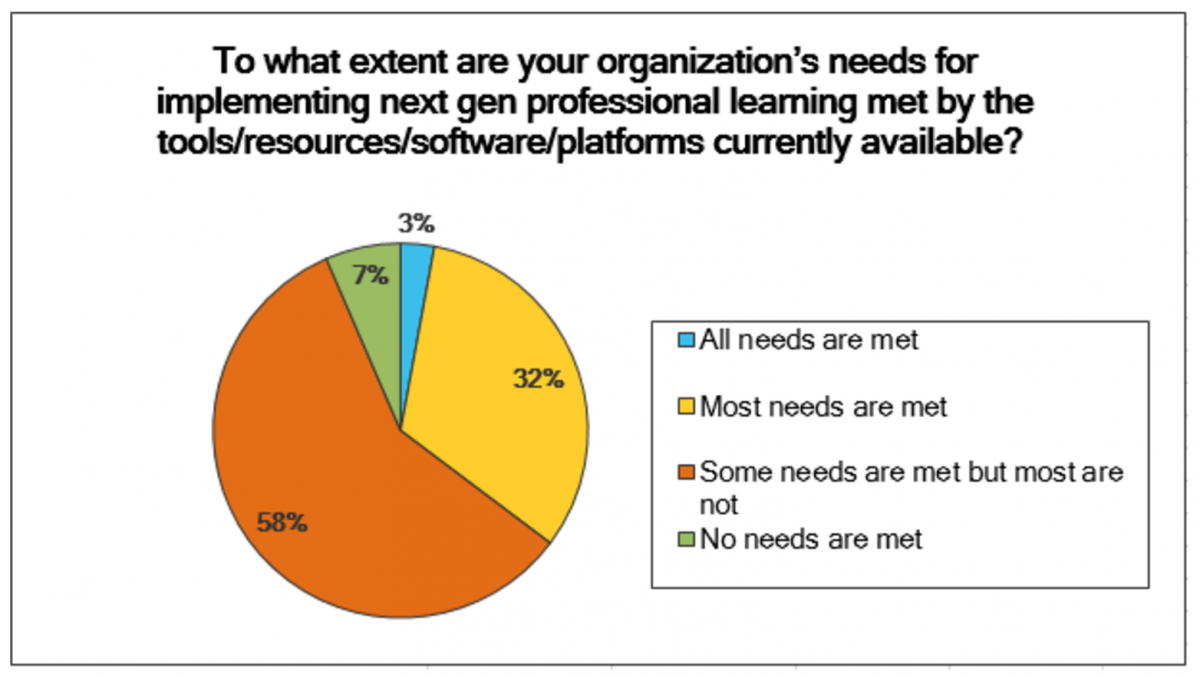
We asked participants what tools, resources, software, or platforms they would most like to see emerge in the market to help their organization realize their next gen professional learning approach. Here’s what they said:
- Adult learning linked to scholar learning
- All data in one place
- Competency-based platforms and content
- Personalized content delivery and pathways
- Integration across systems and/or one platform that does it all but that fits the local context
- Resource sharing, feedback, and collaboration
- Educator portfolio (sometimes including learning plan, profile, and links to student performance and teacher goals)
A handful of participants referenced a number of enhancements to specific tools, for example, “Data tools for analyzing data within Google Sheets.”
Next Steps
We will continue to analyze the survey results with the goals of identifying examples of schools and districts that have implemented technology to redefine personalized learning and succeeded, or schools and districts that have tried and failed. We will identify lessons learned and patterns of success. We will identify exemplars for insight into early promising practices, and we will take note of what’s needed and what educators want when it comes to technology in support of next gen professional learning. Stay tuned!
In the meantime, read 5 Next Gen Professional Learning Practices Used by Schools Today for insights into the professional learning innovations that survey participants are using (or not) and why. You can also learn more about the educators who participated in the survey to better understand the findings I shared in this post. Then read Teacher PD: The Achilles Heel of Personalized, Next Gen Learning where Andy Calkins introduces the Next Gen Professional Learning Project and grapples with the essential question: How will thousands of teachers re-engineer their skills to succeed in next gen classrooms?


